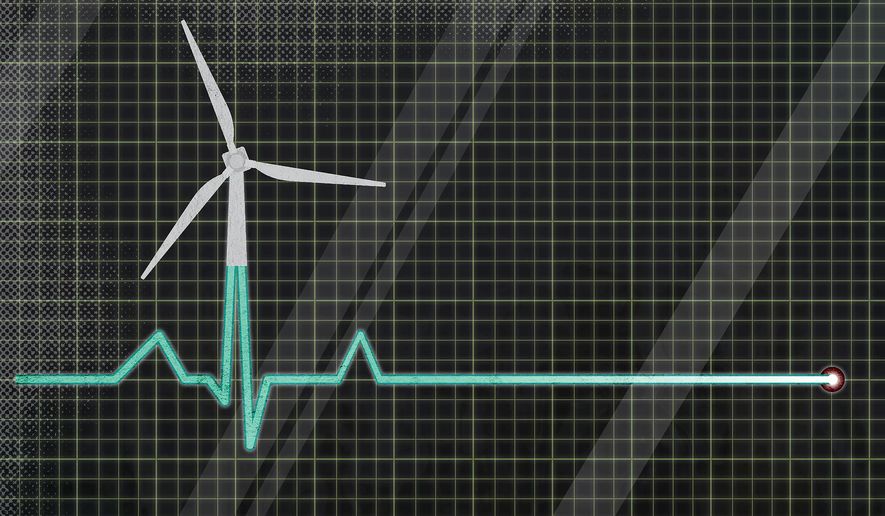OPINION:
When President Biden took office, one of his top priorities was to hasten America’s transition to a fully electrified, fully renewable energy ecosystem. In Indiana, the state’s utilities are following his lead by rapidly closing functioning coal plants to build new renewable facilities.
In taking these actions, our utilities, like Mr. Biden, are operating under the assumption that consumers can continue to have access to steady, reliable energy in the wake of these changes.
If it sounds too good to be true, that’s because it is. While these ambitions are laudable, they run aground when you consider the undeniable fact that rapidly shifting to renewables would decimate access to reliable energy for many Hoosiers.
Indiana has long been one of America’s leading generators of coal-powered energy, and historically that has helped Indiana families light, heat and cool their homes without fear of blackouts.
But this is quickly changing. In recent years, their state’s utilities have shut down coal-powered plants long before they would normally be due for completion, following a national trend to rapidly eliminate coal-powered electricity in favor of newer sources.
One study by the Institute for Energy Economics and Financial Analysis determined that coal-powered electricity generation nationwide is less than half of what it was just a decade ago.
Environmental activists herald this as a win for our energy future, but it is leading us to a future where blackouts, brownouts and shortages become more frequent.
The problem with hastily transitioning our power grid to renewable energy is that the current power grid’s infrastructure is ill equipped to handle this new technology. Renewable energy requires higher voltage infrastructure, such as transformers and power lines, that we simply don’t have and won’t have for quite some time.
According to a report from Princeton University, our nation’s energy transmission capacity would need to triple by 2050 in order to achieve Mr. Biden’s goal of total carbon neutrality by that time. To build this much transmission capacity in just a few decades is nearly impossible, given the scale and cost of the undertaking.
In addition, it is highly unlikely that we will be able to build enough renewable energy facilities to meet current and future demands. According to the Brookings Institute, we would need to dramatically increase the production of renewable energy sources just to adequately replace the coal facilities that are being removed. Brookings found that “at least 7.3 solar plants and 4.3 wind plants are required to produce the same amount of power with the same reliability as a coal-fired plant.”
Making matters worse, the demand for more electricity is already skyrocketing in our digital age, and it will rise even more thanks to Mr. Biden’s Inflation Reduction Act. The bill created massive subsidies and tax breaks intended to transition common products, from cars to stoves, to be entirely electric. This means we’ll need a lot more power at our disposal just to go about our daily lives.
Yet right now, America is already at the precipice of a major reliability crisis. According to a report from the North American Energy Reliability Corp., two-thirds of North America is already at risk of seeing energy shortfalls this summer due to extreme heat. By decreasing reliable coal-powered energy at a time when demand is rising, Indiana’s utilities and the Biden administration are creating a recipe for disaster.
As our world grows and the demand for reliable energy increases, it is essential that we maintain a strong energy portfolio that includes trustworthy and reliable sources of energy, like coal, in addition to developing new technologies and infrastructure. Hoosiers rely on energy to power their daily lives, which is why it’s essential that the energy we provide is reliable.
• Jahan Wilcox served as spokesman for the Environmental Protection Agency from 2019 through 2020.




Please read our comment policy before commenting.